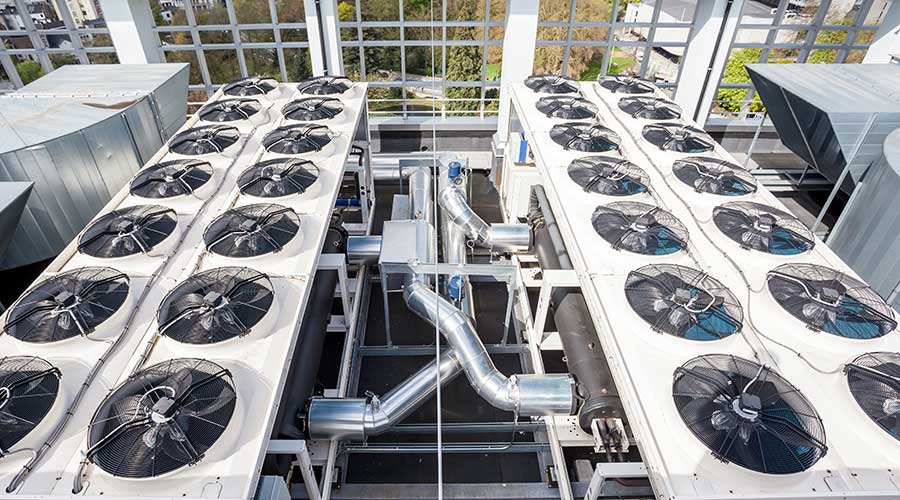Editor’s note: This is part one of a two-part article on decarbonization in healthcare. Part two will offer a system-specific checklist for achieving decarbonization goals.
Hospitals and other healthcare facilities are striving to integrate sustainable practices into their buildings' operational planning and objectives to protect and promote health and the bottom line, and decarbonization has become a focus. Decarbonization means the reduction of carbon. More precisely, it means the conversion to an economic system that sustainably reduces and compensates carbon dioxide emissions.
Leading healthcare organizations are developing strategic cost-reduction programs with good reason — to improve the environment of care for patients, staff, team members and the communities they serve. Using less carbon is right in line with this thinking.
The U.S. National Academies provide independent, objective advice to inform policy with evidence, spark progress and innovation and confront challenging issues for the benefit of society. Recently, the academies called on partners, including the American Hospital Association (AHA) and its professional membership group, the American Society for Health Care Engineering (ASHE), to join its efforts to fight climate change.
Healthcare facilities managers should be aware of the countless benefits of driving sustainable initiatives and should be a part of the solution to climate change. By becoming efficiently responsible, gaining a competitive edge, managing performance and experiencing improved economic status, they also can positively impact the environments and communities surrounding them.
Goals higher up in the tree – such as purchasing energy technologies, securing adequate technical staffing and developing comprehensive sustainability programs that address the issues from every angle – might take significantly more time.
The first step for hospitals is reducing energy use. Once managers put the basic components of energy conservation in place, they can:
- implement the basic energy conservation components to continue driving savings from the next lowest hanging fruit
- revisit their building automation systems savings to position the organization to move to the next level.
The U.S. healthcare system contributes 10 percent of the nation's carbon emissions and 9 percent of harmful non-greenhouse air pollutants, and the industry continues to grow. Sector partners in the U.S. Department of Energy’s DOE Better Building Healthcare program represent 700 million square feet of space, collectively saving $340 million, as reported in 2011. These leading healthcare organizations also are developing strategic cost-reduction programs to improve the environment of care for patients, employees and communities.
Financial obstacles
One of the most common remarks about sustainability is the lack of funding. Hospitals are even more cash-strapped for capital due to COVID-19 events, unplanned staff increases and inflation and the turbulence it creates. Each department has a laundry list of requests requiring a slice of the budget. Typically, the annual budget process targets higher revenue-producing departments for funding. Holding departments accountable for sustainability, energy conservation and decarbonization outside the facilities department can assist in creating flexibility.
Ensuring money is set aside is difficult. It is a constant challenge for facility managers to find innovative ways to use available capital and operational spending to fund and improve hospital efficiencies. Third-party facility management capital support can be a beneficial option. As discussed above, one alternative is to use funding from the savings on initial energy conservation and sustainability efforts to assist in self-funding upcoming opportunities. But managers need to remember that remaining sustainable into the future requires organizational commitment.
Preventive maintenance (PM) programs can be a roadblock if not managed. Several hidden costs occur when a PM program is not implemented correctly. Traditionally, a reliable PM program can save up to 5 percent in added charges if implemented successfully, which is possible when based upon proper staffing levels, technical knowledge and training.
Compared to newer equipment, equipment at the end of its useful life will cause energy waste. Lack of capital planning can affect operational costs, equipment and risk, resulting in increased capital expenses. Energy-related maintenance requirements also can be built into annual capital equipment purchases for strategic facility assets, providing a launchpad for initiation. Financial leadership must be part of the approach to incorporate an accountability mindset into the organization.
It is possible for managers to turn these obstacles into opportunities by developing an internal plan for increasing the use of programs and tools available from energy providers and services, such as Energy Star and ASHE’s Energy to Care program. A voluntary effort of the U.S. Environmental Protection Agency on greenhouse gas reduction programs and strategies also offers a range of resources.
Many of these programs and initiatives will produce projects delivering a return on investment, which the administration will surely want to incorporate. When modifying a building as a sustainable property, financial incentives also are available, depending upon the type of investment made. The government is very interested in environmentally sustainable economic development, and more tax authorities are offering incentives to encourage investments in sustainable projects and technologies, such as grants, tax abatements or deductions and utility discounts or rebates.
Implementing a plan to use commissioning or retrocommissioning – an audit to review the building performance of energy systems – is another low-cost measure that can yield significant savings. Retrocommissioning can save significant dollars in electricity and heating systems, mainly steam.
Merrill Kaney is a member of healthcare management and technical support teams with ABM. He has more than 40 years of experience in plant operations management and engineering.

 UF Health Hospitals Rely on Green Globes to Realize Their Full Potential
UF Health Hospitals Rely on Green Globes to Realize Their Full Potential How Healthcare Facilities Can Be Truly Disaster-Resilient
How Healthcare Facilities Can Be Truly Disaster-Resilient TriasMD Breaks Ground on DISC Surgery Center for San Fernando Valley
TriasMD Breaks Ground on DISC Surgery Center for San Fernando Valley Bigfork Valley Hospital Falls Victim to Data Breach
Bigfork Valley Hospital Falls Victim to Data Breach AI-Driven Facilities: Strategic Planning and Cost Management
AI-Driven Facilities: Strategic Planning and Cost Management